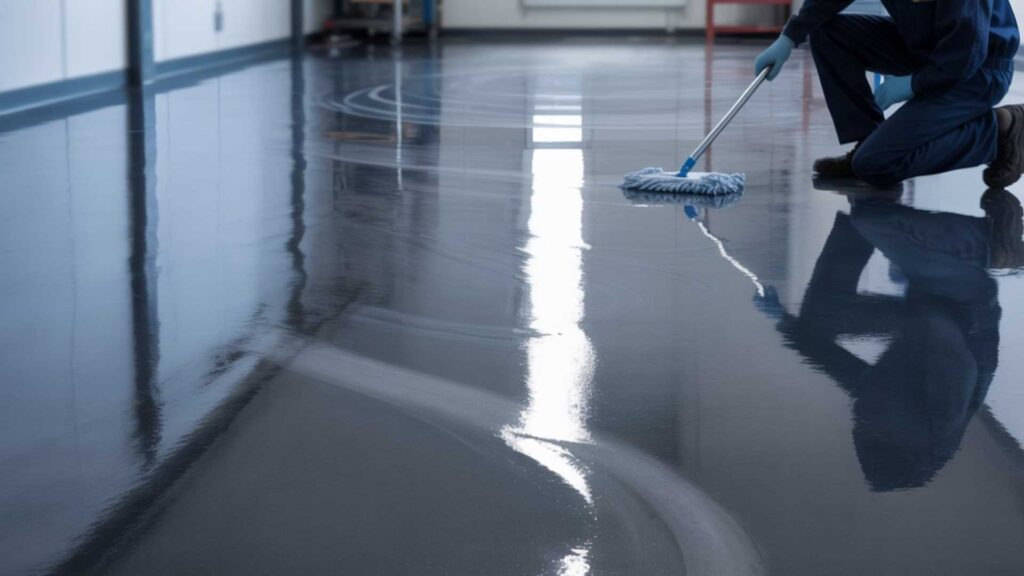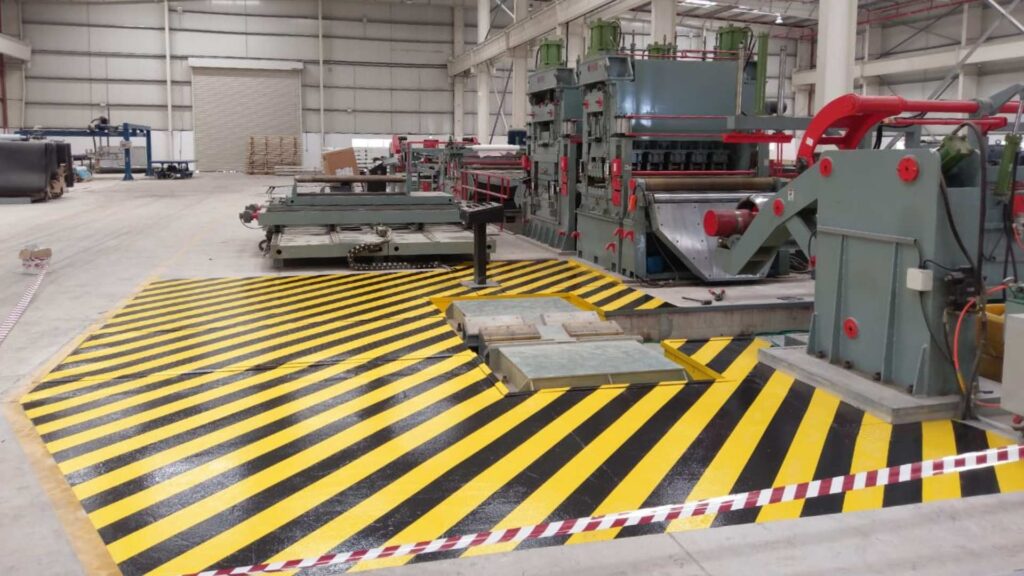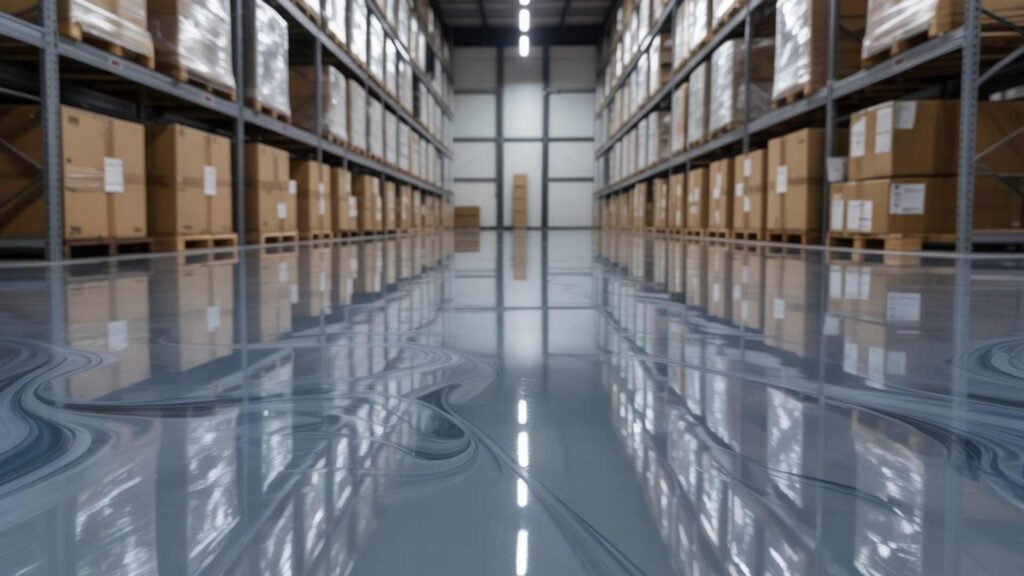Epoxy flooring is specifically designed for durability, hygiene, and performance under demanding conditions. In Dubai, where buildings are constantly affected with high temperatures, fine dust, heavy usage, and strict municipal standards, epoxy has proven its value across industrial, commercial, and residential applications. To ensure long-term performance, regular maintenance is essential.
This article outlines a comprehensive, Dubai-specific approach to maintaining epoxy floors for optimal functionality, safety, and surface integrity
Table of Contents
Tips For Maintaining Epoxy Flooring
Understand Your Epoxy Floor Type First
Every epoxy floor is designed based on its environment and expected usage. Before setting a maintenance schedule, it’s important to confirm key characteristics of the installed system.
Factors to assess:
- Finish type: Glossy, matte, or textured
- Topcoat properties: UV-resistant, anti-slip, or antimicrobial
- Traffic exposure: Light pedestrian zones, forklift pathways, or automotive access
- Location: Indoor, semi-covered, or outdoor areas
Knowing these parameters helps select the right tools, cleaning agents, and frequency of care. For example, a food-safe epoxy floor in a cloud kitchen has different hygiene requirements than a high-load warehouse floor in Dubai Industrial City.
At Durra ALtaj Contracting, we provide floor-specific care guidelines during project handover, which align with UAE health and safety regulations.
Daily Cleaning Routine: Keeping It Dust-Free
Dubai’s environmental conditions introduce a constant layer of fine dust and sand into built spaces. Left unaddressed, this particulate matter accelerates surface wear and dulls the floor’s finish.
Recommended daily cleaning steps:
- Use a microfiber dust mop or electrostatic mop to lift dust and sand without grinding it into the floor
- Focus on entryways and corners, where debris tends to accumulate
- Maintain entry mats or industrial grates at access points to reduce dust tracking
- For large facilities, deploy auto-sweepers with soft brushes designed for smooth surfaces
This routine protects the epoxy’s seal coat, reduces micro-abrasions, and helps maintain visual clarity.
Weekly Maintenance: Wet Cleaning Best Practices
Wet cleaning helps remove embedded grime, chemical residues, and stains that dry sweeping alone cannot address. In Dubai’s food service and healthcare sectors, weekly sanitation is essential for regulatory compliance.
Step-by-step process:
✅ Step 1: Mix a neutral-pH detergent in warm water based on the dilution ratio provided by the manufacturer
✅ Step 2: Use a soft mop, flat mop, or low-speed auto scrubber with a non-abrasive pad
✅ Step 3: Rinse the surface thoroughly with clean water to prevent residue build-up
✅ Step 4: Allow the floor to air dry in a ventilated environment or dry it with a clean mop in enclosed spaces
Avoid using:
- Acidic or alkaline cleaners
- Ammonia-based solutions
- Abrasive scrubbers, steel wool, or hard bristle brushes
Incorrect cleaning products can erode the epoxy coating, cause discoloration, or weaken the bond between layers.
Monthly Inspection Checklist
Visual inspections once a month can help detect surface wear, mechanical stress, and environmental damage early, before they require major repairs. This is especially relevant in facilities where 24/7 operation, high-impact activities, or chemical exposure are routine.
Key areas to inspect:
- Surface scratches, dull spots, or discoloration in traffic lanes
- Cracking along edges, expansion joints, or corners
- Blisters, bubbles, or raised patches, which may signal moisture ingress or delamination
- Loss of anti-slip texture in wet zones or ramps
- Chemical stains in workshops or laboratories
Take note of affected areas and consult your flooring partner for resurfacing, patching, or recoating if needed
Preventive Maintenance Guidelines
Certain high-traffic behaviors and environmental stressors shorten the life of epoxy flooring. Adjusting some day-to-day practices can prevent premature surface fatigue and protect topcoat integrity.
Recommended preventive measures:
- Place heavy-duty entrance mats at doorways to trap sand before it reaches the epoxy surface
- Attach soft rubber protectors to chair legs, pallet jacks, and metal shelving
- Avoid dragging equipment, crates, or furniture directly on the floor
- Use forklift guidance lanes with protective overlays in logistics areas
- Install vibration-dampening pads beneath heavy machinery
These steps reduce friction, absorb impact, and prevent point load damage that often leads to cracks or indentations.
Seasonal Deep Cleaning & Resealing
For facilities with continuous operation, deep cleaning and topcoat reapplication are recommended every 6 to 12 months. This schedule aligns with typical wear cycles in Dubai-based commercial kitchens, gyms, showrooms, and storage depots.
Deep cleaning process:
- Conduct a full sweep followed by wet scrubbing using an industrial-grade ride-on scrubber
- Strip away residue and contaminants using manufacturer-approved stripping agents
- Apply a protective topcoat such as polyaspartic or UV-stable epoxy to restore gloss, slip resistance, and chemical shielding
- Let the floor cure undisturbed based on the system used (typically 12–48 hours)
Facilities that handle oils, acids, or sanitizers should also test pH and chemical resistance before and after recoating. Durra Group supports such facilities with structured maintenance contracts and environmental testing services.
When to Call Professionals
Certain types of surface damage require professional repair or complete recoating. Attempting to fix them using household cleaners or unverified materials can worsen the issue.
Signs that require professional attention:
- Visible cracks extending across surface zones
- Discoloration from oils, greases, or acids that cleaning cannot resolve
- Peeling or delamination at joints and seams
- Surface bubbling due to moisture vapor from below the slab
- Faded or worn markings in zone-delineated areas (e.g., factories or hospitals)
A licensed flooring contractor can assess the condition, recommend suitable surface treatments, and restore functionality while complying with Dubai’s municipal regulations.
Final Word: Maintain It to Maximize ROI
Epoxy flooring is a long-term investment, engineered to perform under pressure. By following a structured maintenance approach, facilities can preserve functionality, aesthetics, and safety for over a decade. A well-maintained floor minimizes operational disruptions, meets hygiene and compliance expectations, and reduces the need for frequent repairs or surface replacement.
For Dubai’s climate and regulatory environment, consistency is key. A few minutes each day, paired with seasonal upkeep, can ensure that your epoxy flooring continues to serve your space as intended.
Need Help with Epoxy Floor Maintenance or Resealing?
At Dura Altaj Contracting LLC, we support clients throughout the epoxy lifecycle, from system design and installation to cleaning guidance, aftercare kits, and full-service maintenance contracts. Our services are tailored to Dubai’s industrial, commercial, and residential requirements.
Contact us today to schedule an inspection or request a maintenance quote.
Let’s keep your floors performing the way they were built to!



